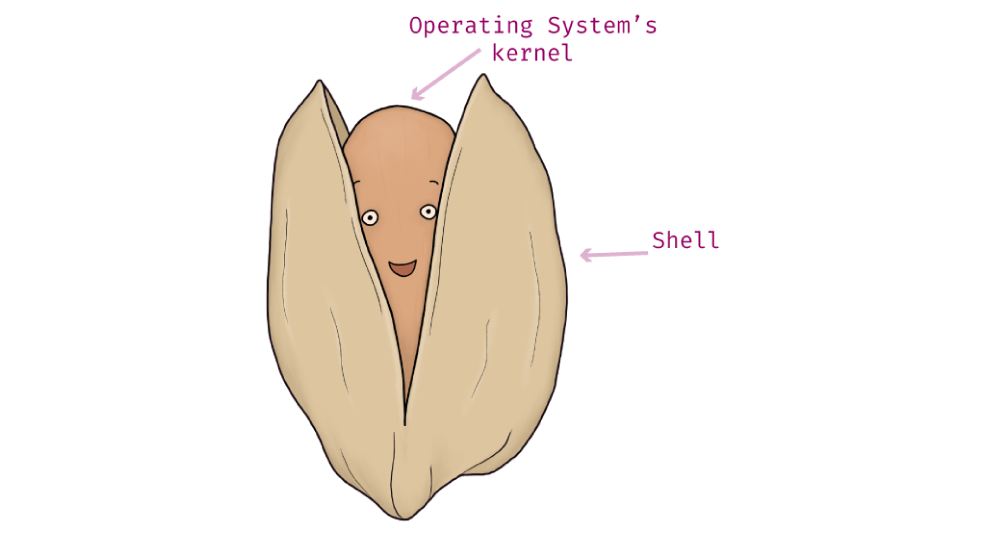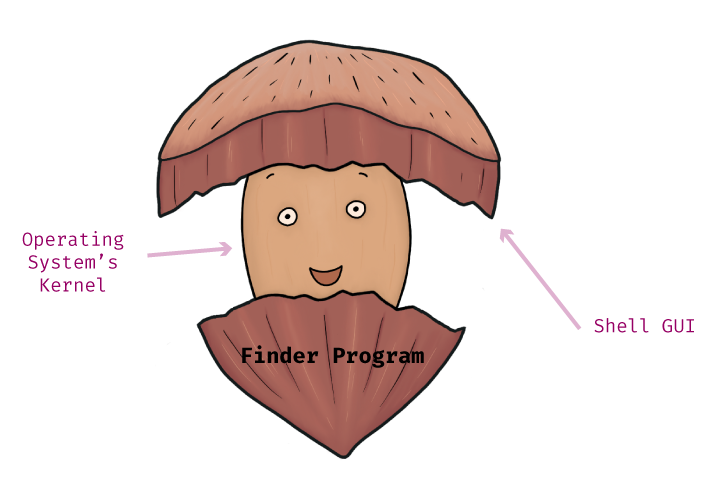This post is part of the series 30 Days of Web Development.
In this series, we start from the basics and walk through everything you need to know to get started with Web Development.

GUIs and Shells are two important terms we are going to explore. Understanding how they relate to our Operating System will clarify potential points of confusion later on.
This post is part of the series 30 Days of Web Development.
In this series, we start from the basics and walk through everything you need to know to get started with Web Development.
GUIs and Shells are two important terms we are going to explore. Understanding how they relate to our Operating System will clarify potential points of confusion later on.
Continuing our Operating System discussion from yesterday, we now understand generally what Operating Systems do. There are some more convoluted differences between the different types of Operating System, but the one we are concerned with is the GUI and Shell. Two terms we will introduce and talk about today.
Though you may not know it, you’re very familiar with GUI’s. These are programs designed to make it easy for the everyday computer user to do things with their computer. They use graphics, icons, and menus to make navigation and executing commands easy.
An example of a popular GUI is the Finder program, see the following screenshot. The equivalent program in Windows is “File Explorer.”

MacOS and Windows OS have slightly different ways of organizing and presenting files. Functionally, these differences will not matter to us. However, if you find any of the examples difficult because you are using a different Operating System, please reach out to us for assistance.
Shell and Kernels are about as deep as we need our learning of Operating Systems to go for now. However, understanding even on a basic level, these two terms will clarify how you can work with an Operating System; something you'll be doing as a Web Developer.
A Shell is an interface that gives you access to your computer’s Operating System. Think of it as a wrapper around your Operating System - technically it wraps around your Operating System’s Kernel. Hence the name Shell - a shell/protective barrier - around the brain/core of your computer.
The Kernel is a computer program, that is the core of your computer's Operating System. For our purposes, it's enough to know that it connects all your computers application software to the hardware of your computer. Sometimes people want to think that the Kernel is the Operating System. This is not accurate, however, as it's only a part of the Operating System, not the whole thing.

Remember a moment ago when I said that your Finder program was a GUI? Well a GUI is also a type of Shell. It makes sense if you think about it. You use your Finder to do things to your Operating System's file system, like make or delete folders and files.

You don't need to be an Operating System expert to be a Web Developer. You should, however, as a developer, understand some of the fundamentals.
Code doesn't just run on its own. When you write programs or applications for other people to use, they will be using computers. And guess what those computers will be using to run your programs or application? An Operating System.
What if you write a fantastic web application, but it uses up all of your users' RAM? Your users won't be happy.
In our next blog post, we'll set up one last Web Developer tool by installing a text editor.
The entire source code for this tutorial series can be found in the GitHub repo, which includes all the styles and code samples.
If at any point you feel stuck, have further questions, feel free to reach out to us by: